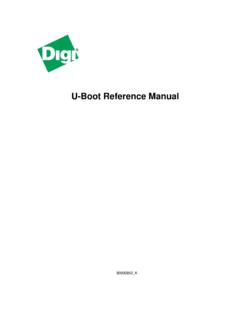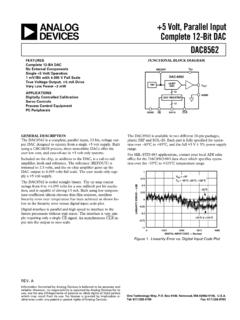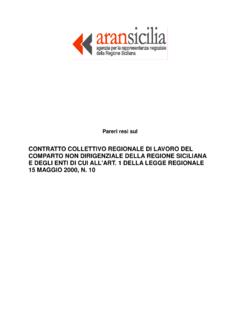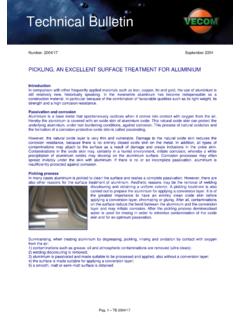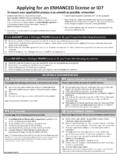Transcription of CH COCH CH MW: 72.11 CAS: 78-93-3 RTECS: …
1 NIOSH Manual of Analytical Methods (NMAM), Fourth EditionMETHYL ETHYL KETONE 2500CH3 COCH2CH3 MW: CAS: 78-93-3 RTECS: el6475000 METHOD: 2500, Issue 2 EVALUATION: FULLI ssue 1: 15 February 1984 Issue 2: Rev., 15 May 1996 OSHA :200 ppmNIOSH:200 ppm: STEL 300 ppmACGIH:200 ppm: STEL 300 ppm(1 ppm = mg/m3 @ NTP)PROPERTIES:liquid; d g/mL @ 20 C;BP C; MP !86 C; VP 13 kPa(100 mm Hg; 13% v/v) @ 25 C; explosiverange 2 to 10% v/v in air SYNONYMS: 2-butanone; MEKSAMPLINGMEASUREMENTSAMPLER:SOLID SORBENT TUBE(beaded carbon, ~150 mg/~75 mg)FLOW to L/minVOL- L @ 200 ppm -MAX:12 LSHIPMENT:routineSAMPLESTABILITY:at least 90 days @ - 5 C [1]BLANKS:2 to 10 field blanks per setTECHNIQUE:GAS CHROMATOGRAPHY, FIDANALYTE:methyl ethyl ketone (MEK)DESORPTION:1 mL CS2.
2 Stand 30 minINJECTION VOLUME:5 :LTEMPERATURE-INJECTION: 250 C -DETECTOR: 300 C -COLUMN: 55 to 75 CCARRIER GAS: N2 or He, 25 mL/minCOLUMN:glass or stainless steel, 4 m x 2-mm ID;20% SP-2100 Carbowax 1500 onSupelcoport 100/120 CALIBRATION:MEK solutions in CS2 to 5 mg per sampleESTIMATED LOD:4 :g per sample [2,3]PRECISION ( r) [1]ACCURACYRANGE STUDIED:75 to 2250 mg/m3 [1]BIAS:not significant [1]OVERALL PRECISION ( rT) [1]ACCURACY: : The working range is 17 to 560 ppm (50 to 1650 mg/m3) for a 3-L air sample. The method is applicable to15-min samples.
3 This method was developed to give improved sample stability compared to conventional charcoal tubes [3,4]. Side-by-side comparisons of this method and Method S3 were made in a sporting goods manufacturing plant in which MIBK,THF, and toluene were also present. This method has also been used successfully for methyl isobutyl ketone [1] and acetone[5].INTERFERENCES: Under the given conditions, acetone and isopropanol have retention times similar to MEK. Massspectrometry and other GC columns, , SP-1000, or 30 m x WCOT capillary coated with 1 :m DB-1, are aids toresolving METHODS: This method is similar, except for the sampler, to Methods P&CAM 127 [6] and S3 [7,8], which it ETHYL KETONE: METHOD 2500, Issue 2, dated 15 May 1996 - Page 2 of 4 NIOSH Manual of Analytical Methods (NMAM), Fourth : Carbon disulfide*, chromatographicquality, containing (v/v) benzene* orother suitable internal ethyl or helium, , filtered.
4 * See SPECIAL : glass tube, 7 cm long, 6-mm OD, 4-mm ID. Two sections of 20/40 meshbeaded carbon separated by 2-mm foamplug (front = ~150 mg, back = ~75 mg). Tubes are commercially available: Anasorb747 (SKC 226-81), Anasorb CMS (SKC226-121), Carboxen-564 (Supelco ORBO-90), or equivalent. sampling pump, to L/min,with flexible connecting tubing. chromatograph, FID, integrator andcolumn (page 2500-1). , glass, 2-mL, PTFE-lined crimp caps. , 10-:L, readable to PRECAUTIONS: Carbon disulfide is toxic and an acute fire and explosion hazard (flashpoint = !30 C). Work with it only in a hood.
5 Benzene is a human each personal sampling pump with a representative sampler in the ends of the sampler immediately before sampling. Attach sampler to personal samplingpump with flexible at an accurately known flow rate between and L/min for a total sample size to 12 the samplers with plastic (not rubber) caps and pack securely for PREPARATION:NOTE: Store samples in a the front and back sorbent sections of the sampler tube in separate vials. Discard the glass wooland foam mL eluent to each vial. Attach crimp cap to each to stand 30 min with occasional AND QUALITY daily with at least six working standards over the range 4 to 500 :g MEK per known amounts of MEK to eluent in 10-mL volumetric flasks and dilute to the together with samples and blanks (steps 11 and 12).
6 Calibration graph (ratio of peak area of analyte to peak area of internal standard vs.:g MEK). desorption efficiency (DE) at least once for each batch of sorbent used for sampling in thecalibration range (step 8). Prepare three tubes at each of five levels plus three media and discard back sorbent section of a media blank a known amount of MEK directly onto front sorbent section with a microliter the tube. Allow to stand ETHYL KETONE: METHOD 2500, Issue 2, dated 15 May 1996 - Page 3 of 4 NIOSH Manual of Analytical Methods (NMAM), Fourth (steps 5 through 7) and analyze together with working standards (steps 11 and 12).
7 A graph of DE vs. :g MEK three quality control blind spikes and three analyst spikes to insure that the calibration graphand DE graph are in gas chromatograph according to manufacturer's recommendations and to conditions given onpage 2500-1. Inject sample aliquot manually using solvent flush technique or with :If peak area is above the linear range of the working standards, dilute with eluent, reanalyzeand apply the appropriate dilution factor in peak area. Divide the peak area of analyte by the peak area of internal standard on the the mass, :g (corrected for DE) of MEK found in the sample front (Wf) and back (Wb)sorbent sections, and in the average media blank front (Bf) and back (Bb) sorbent : If Wb > Wf /10, report breakthrough and possible sample concentration, C, of MEK in the air volume sampled, V (L):NOTE: :g/L = mg/m3 EVALUATION OF METHOD:The method was evaluated with spiked samplers and with atmospheres generated by syringe pump/airdilution, verified by infrared absorption.
8 For Ambersorb XE-347 samplers, breakthrough (80% RH, 200 ppm, L/min) = L; DE (4 to 18 mg per sample) = ; storage stability ( to 4 mg per sample) = 90% aftersix weeks at 25 C; precision and accuracy as given on page 2500-1 (15 samples) [2]. A user check gavean estimated LOD of 4 :g MEK per sample [3].Storage stability of MEK and methyl isobutyl ketone (MIBK) on Anasorb CMS samplers was determined forthe Proficiency Analytical Testing (PAT) program [1]. Stability of MEK ( , , and mg persample) was 94 to 99% after 90 days at -5 C. Only the highest level ( mg) was stable (96% recovery)at ambient temperature for 30 days, and was stable for 180 days (98% recovery) at freezer temperatures (-5 C).
9 Results were similar for MIBK, although all concentration levels ( , , and mg per sample)were stable for 30 days at ambient :[1]NIOSH [1996]. Six-month storage stability data for methyl ethyl ketone and methyl isobutyl Analytical Testing program, Jensen Groff, unpublished data.[2]Slick, E. J. [1983]. NIOSH, unpublished data. [3]User check, UBTL, NIOSH Seq. #3990-J (unpublished, August 29, 1983).[4]User check, DataChem Labs., NIOSH Seq. #7053-L (unpublished, August 9, 1990).[5]DataChem Labs, NIOSH Seq. #7373-L (unpublished, Nov. 27, 1991).METHYL ETHYL KETONE: METHOD 2500, Issue 2, dated 15 May 1996 - Page 4 of 4 NIOSH Manual of Analytical Methods (NMAM), Fourth Edition[6]NIOSH [1977].
10 Organic solvents in air: Method P&CAM 127. In: Eller PM, ed. NIOSH Manual ofAnalytical Methods, 2nd ed., V. 1, Department of Health, Education, and Welfare, Publ. (NIOSH)77-157-A.[7]Ibid., V. 2, 2-Butanone: Method S3. Department of Health, Education, and Welfare, Publ. (NIOSH)77-157-B. [8]NIOSH [1977]. Documentation of the NIOSH Validation Tests, S3, Department of Health, Education,and Welfare, Publ. (NIOSH) REVISED BY:Judd C. Posner, , and Mary Ellen Cassinelli, NIOSH/DPSE.










